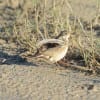 By Jim Stevenson
By Jim Stevenson
This is the last UTC bird gallery before I begin some from our Western Trip I am currently conducting. It’s mostly winter songbirds, wrapping up the last of the pictures I took since mid-fall.
I’m sure many of you are aware that FSU, where I went and taught (as well as my father for many years) just narrowly defeated a terrific Auburn football team (that beat Alabama), for the National Championship. FSU went 14-0 and scored more points this year than any team in the history of the NCAA. Their kicker also broke the all-time season scoring record, while their freshman QB won the Heisman Trophy. The odd thing is that FSU has won three National Championships the same year their QB won the Heisman, and that’s the only three times it’s ever happened. How weird.
The only drawback was that my wonderful cousins, John and Jennifer, are ardent Auburn fans. Wish it had been Bama.
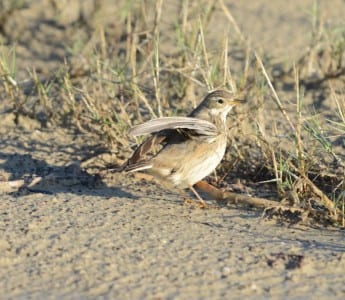
American Pipits are terrestrial songbirds of Asian origin, closely related to the wagtails of Alaska. They are fairly regular winter residents in the Deep South, but for the first time I my 18 years in Texas, I saw them migrating “up” the coast along the Gulf shore of the Island. And there were hundreds, p robably thousands! My hypothesis is the cold winter has delivered them to our doorstep, just as other species are further south than usual.
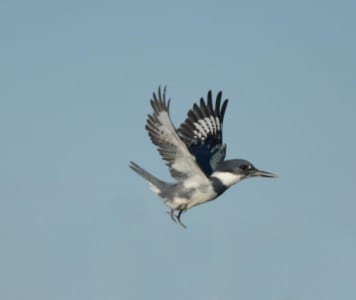
This Belted Kingfisher made a sudden alteration in mid-flight when our boat (piloted by Richard Mayfield’s son-in-law) spooked the passing bird on the CBC. Kingfishers are relatives of kookaburras (Australia) but have radiated into many species around the World, with the Belted being by far the most widespread in North America.
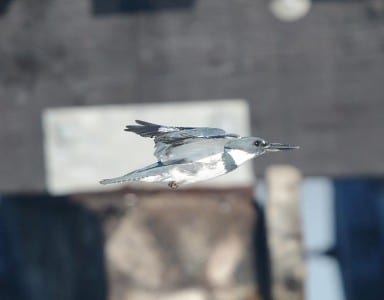
Kingfishers are excellent fliers and even dive headlong into the water for fish, a la terns. You can see the large, dagger bill and the blue “belt” across the chest. Females also have a reddish belt, curiously making them more colorful than males. Do you know the family of birds that is famous for the gals being more beautiful than their male counterparts? Be thinking about it and I’ll tell you later.
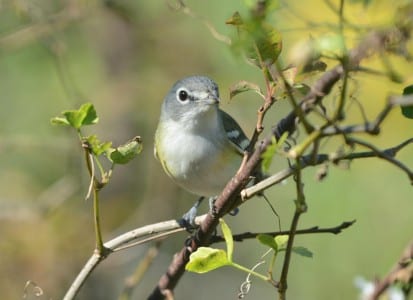
Blue-headed Vireos were named by colorblind ornithologists who were faced with the task of (seriously) separating the old Solitary Vireo into three species. Er go, this is the eastern bird, and East Texas gets mostly the eastern species. The GRAY, bespeckled head and bold, white eyering easily ID this winter resident.
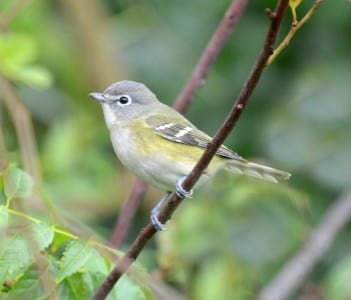
Most vireos are quite plain, but this and the Yellow-throated in the migration are better on the eyes than the other drab species. Vireos are a New World family, found all down through the Tropics. The hook on the tip of the bill is used for pulling caterpillars out of cavities. Some vireos have wingbars and others don’t.
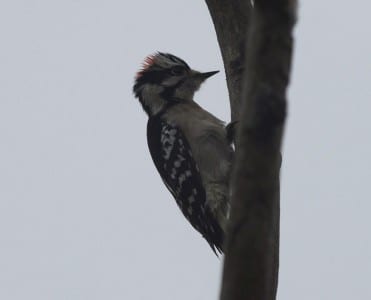
Our smallest woodpecker is the Downy, and the amazingly short bill is an excellent field mark. Woodpeckers, except flickers and sapsuckers, are virtually nonexistent on Galveston Island, but this little guy has survived for years, often hanging out with his friend, the Ladder-backed. The red on the head tells you he’s a
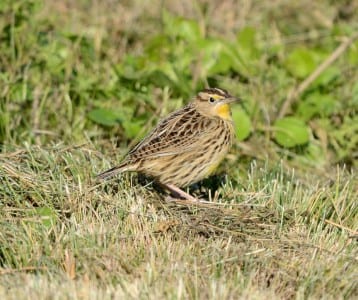
Meadowlarks are a good example of augmentation here in the Deep South. We have them in summer but many more come south in fall to winter in our fields and grasslands. They are in the same family with blackbirds but have even longer bills. They often stick their beaks in mats of grass and open them to give the bird a better look at what bug are inside.
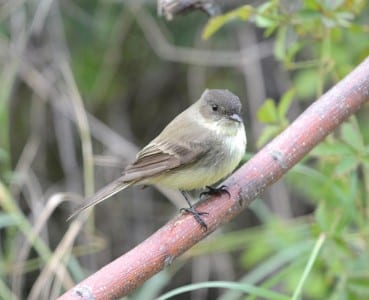
Eastern Phoebes are our only real wintering flycatcher, and a staple in many peoples’ yards. The frequent tail-bobbing is a good field mark of behavior, while the large, dark head may be the best physical mark. They say their name and also issue a powerful chip. This is a fall bird as those seen later are usually not as yellow below.
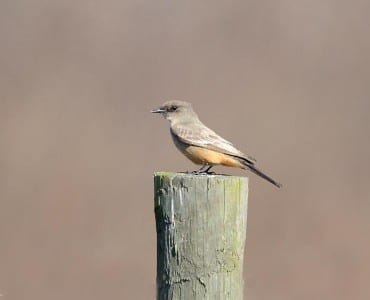
Usually a western bird, this Say’s Phoebe was over between High Island and Anahuac NWR in mid-December. This species is sometimes confused with female Vermilion Flycatchers, but has no streaks. Like Easterns, this species is often found near water, perhaps partly due to there being more insects there.
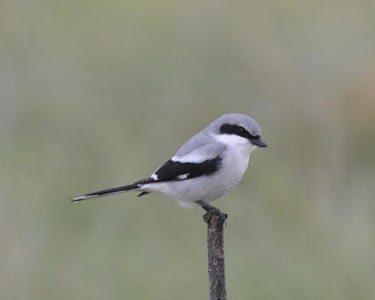
Shrikes are a worldwide family of hunters, killing their prey with the large, hooked bill (a little like a vireo). The black mask helps shield their eyes from the sun, but most animals with dark masks are predators. Some country folks call shrikes “butcherbirds,” because they pin their prey on barbed wire fences or thorns.
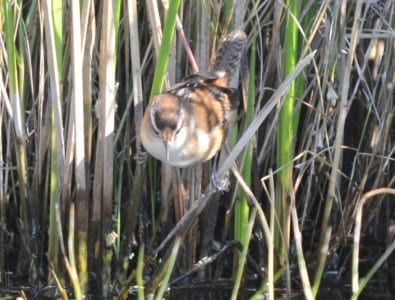
A common resident in marshes along the coast is the diminutive Marsh Wren. They are clear below and reddish-brown above, with a long bill and distinct, white eyestripe. The tail is usually cocked up a la other wrens, and they seem to be constantly moving through the reeds and cattails.
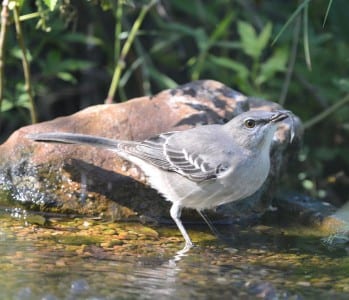
Our State Bird (and five others) has three different squadrons in Texas. Some breed here in summer, others pass through in spring and fall and another population winters in the Lone Star State. This bird is bathing in my drip but has unearthed an insect larvae (or crustacean?). There are several species of mockingbirds in the Americas, which is the reason ours is the “Northern.”
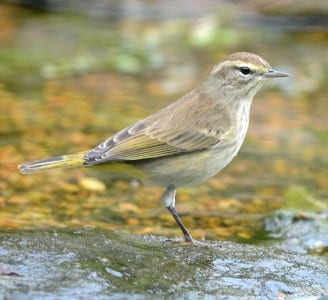
Far less common in Texas than back East is the Palm Warbler, a winter resident along the coast in grassy areas like my neighborhood of Indian Beach. This is the same habitat that draws Bobolinks in late spring, or grasspipers like Upland Sandpipers in the migration. In biology, we learn that habitat is everything, especially since we began the relatively new study of ecology.
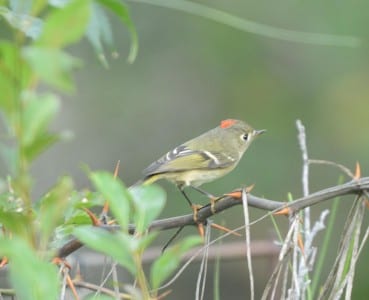
With as common as Ruby-crowned Kinglets are, with half being males, it is interesting how few we ever see with their crowns erect. This male bounced my yard for several minutes, becoming the first RCKI I’ve gotten any kind of a decent picture of with its red crown up. The colored crown on the Golden-crowned Kinglet is always visible.
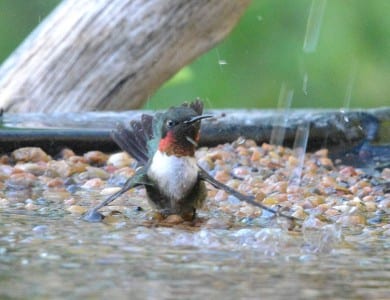
This Ruby-throated Hummingbird visited my drip late fall and really frolicked in the bird bath. Like many hummers, their gorget is red and their back, green. They fly down the coastline in Texas to Central American lands like Costa Rica, often among the first returning birds in March. They return trans-Gulf after a fall migration along the coastline.
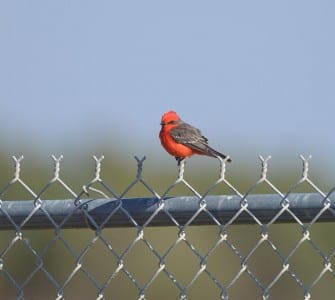
While most flycatchers are subdued, Vermilion males are apple red. They are quite fond of water and are rare winter residents in the East. They are found all the way down the Pacific Coast to Chile, and seem to get redder the further south one visits. Immature males gain more and more red as they mature.
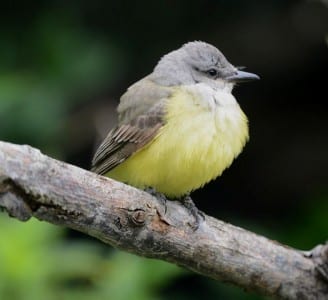
Western Kingbirds are common in summer throughout much of the American West, but are scarce in the East. They also closely resemble 2-3 other species of yellow-bellied kingbirds, so watch for the black, squared-off tail with the white outer tail-feathers. Note the rictal bristles around the beak, helping the bird haul in flying insects.
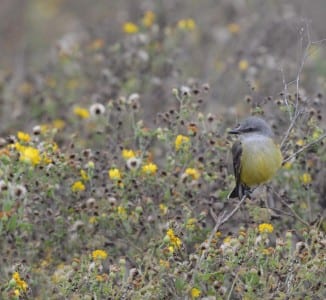
This Western Kingbird was in Galveston Island State Park, along with several other really late WEKIs this fall. You can actually see the black tail and white edges, p lus the chest is grayish. Despite my left-brained limitations, it did occur to me that thee yellow flowers might bring him out a bit. And also the gray flowers, matching his throat. And the orange f lowers, paralleling the sweet little orange butterfly he just ate…
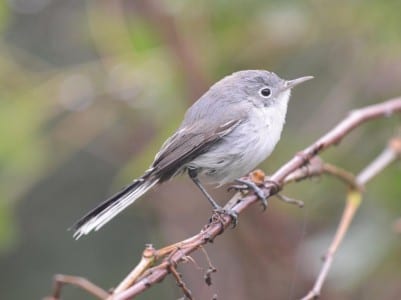
Gnatcatchers are gulpers of tiny insects, snagged with the elongate beak. All species are gray and resemble tiny mockingbirds. This Blue-gray Gnatcatcher is found over much of the US, but there are other, rare species near the Rio Grande. Like so many birds, they have white outer tail-feathers to attract predators away from the body, as well as to cause insects to jump.
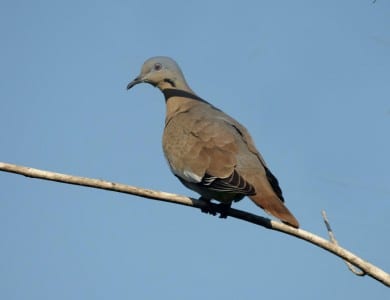
White-winged Doves were once absent in many areas of Texas and the Desert SW. Now, they have populated loads of new areas and become abundant. They even migrate past my house on West Galveston in very late spring and back in November. They have a squared-off tail and brilliant, white wing-patches.
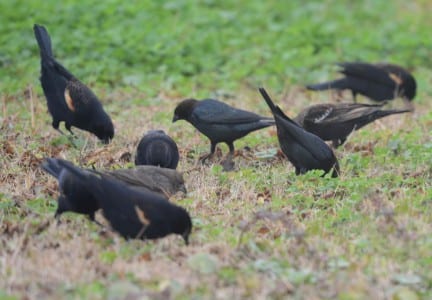
Blackbirds often stay in multi-species flocks, especially in winter. Here there are redwings and BH Cowbirds foraging together, with both sometimes putting their tails straight up in the air. Note the tawny brown on the back of the male RW. The brown tips of the feathers wear off over the winter so they are jet-black for the gals come spring. Cowbirds cut to the chase and just dump their eggs in other birds’ nests.
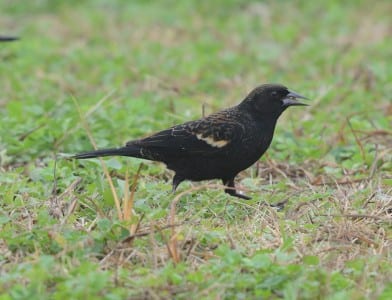
Red-wings have a combo bill, strong enough to crack most seeds but long & thin enough to nail insects. This works great as they are largely granivorous all winter but must feed bugs to growing chicks (so as not to raise seedy offspring?). These are our Nation’s most abundant bird, and there was a time, believe it or not, that farmers partially subsisted on their meat through the winter.
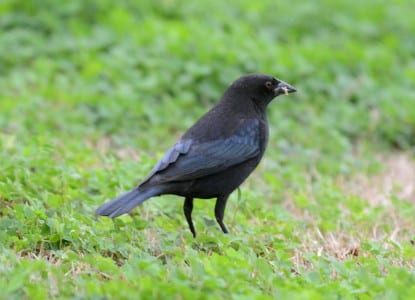
Sneaking into our area in blackbird flocks are Bronzed Cowbirds, the larger cousin from the Tropics. This female is finishing off a grasshopper, and you can see why they were once called “Red-eyed Cowbird.” Given their predilection for nest parasitism, some bird people have a few other names for them.
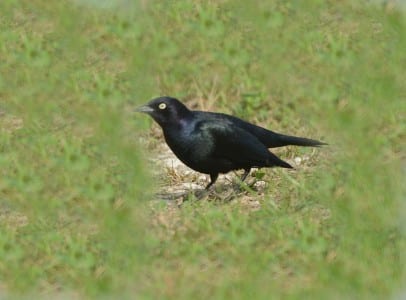
Some blackbirds are much like redwings but without the red patches. Two are very similar, the Brewer’s and the Rusty. This is a Brewer’s, which can be seen fairly frequently in fields and pastures. One good place to look for several blackbirds is where grain trucks turn, as they spill “seeds” all over the road. Try the intersections of HW 36 and 2004, and also the south end where 36 terminates. Both are pretty darn good areas for birds, anyway.
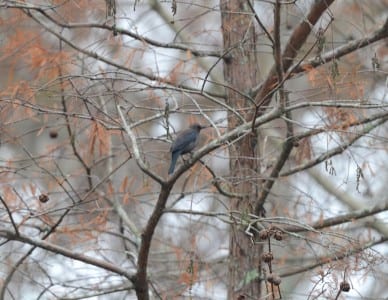
A curiously-disappearing blackbird is the Rusty, normally found in cypress swamps in the southern winter. This is a female near the Mississippi River, but fall immatures can be quite brown, either named for the rust color or the famous dentist in Louisiana, Rusty Wilson. I’m guessing the former. Note there are no streaks, like a RW* would have. *That’s redwing, not Rusty Wilson. 😉
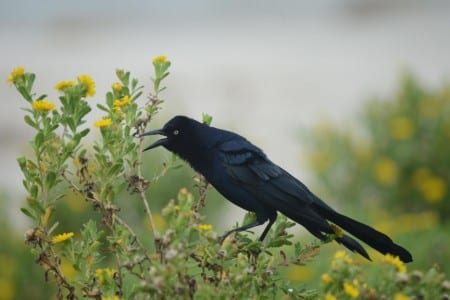
Grackles are rather large, long-tailed blackbirds that tolerate humans and even seek them out. Our prolific Great-tailed Grackles are most easily told by the white eyes, but those of you living on the Atlantic Coast know your boat-tails also have light eyes. Gulf of Mexico boat-tails have dark eyes, and they are the only BTs seen near great-tails. The smaller Common Grackle, found over most of the Country, has light eyes, but not the large size and the huge tail. Most GTs have flat heads but occasionally they raise their crown feathers like this one.
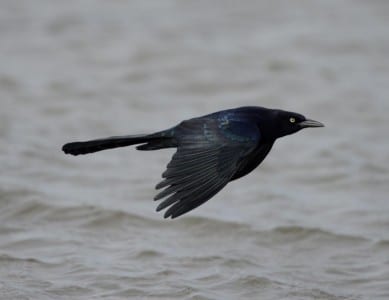
Flying birds also have f lat heads when they are normally rounded, and this GT Grackle is an example. Note the rounded primaries of so many nonmigratory birds, and the tail that is larger than a Common. GTs have no special affinity for water like BTs do, but they’ll work shorelines in search of zoological morsels.
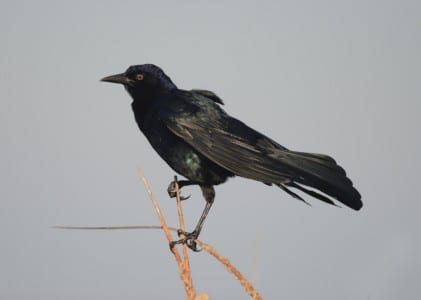
Here, the same but opposite thing happens. The strong wind blows the rounded head of a BT Grackle flat. However, it doesn’t change the brown eye color. Wind can also blow the wing coverts, like it is doing on this bird’s right wing. In Texas, this species is fairly common in a few freshwater marshes, not far from the coast, especially NWRs.

 Posted in
Posted in 
























Just stumbled upon this beautiful bird site,love it and thanks for all the pretty pictures and the fun info.